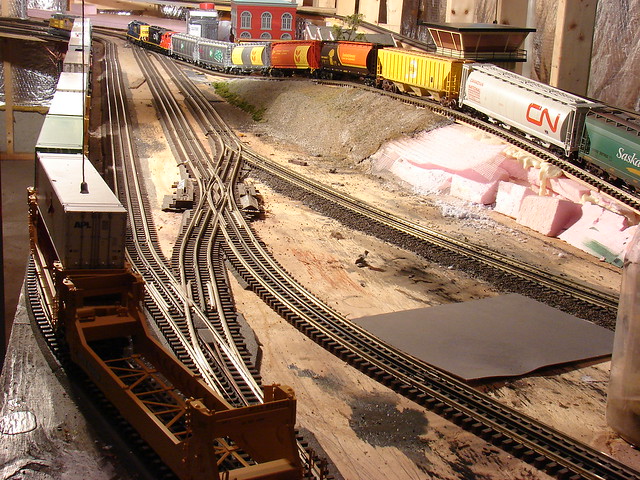1. How did you attach the luan to the foam?
After the track is set, I use the great stuff to fill in spaces, The great stuff acts as binder to foam and luan.
2. Is the foam strong enough to support the train?
Absolutely. I have made trestles that were temporary (used for three yrs) of foam with a luan base. The foam/ luan is extremely strong. A layout builder I know often uses a luan sandwich of foam which he stands on with no issues using the open grid system (16 inch centers).
3. Can you please be a bit clearer on "attach 1st third to flat surface".
When starting the grade I take a piece of 40" (in this case Atlas track) and screw about a third of the track to the flat base through the luan. The easement is started after this section.
Found method to be very easy, since you can adjust transitions until its perfect without much effort. Its also good for me, i found making wood blocks time consuming and often they were off a hair. The combination of foam and great stuff makes it a breeze. This hump was done in one evening. Don't use the great stuff until you have run trains with your engines and, long passenger cars etc. for awhile
BTW, I did cheat and bend the atlas track at top of hump, something you will not need to do for a normal grade.
Hope this is helpful.










